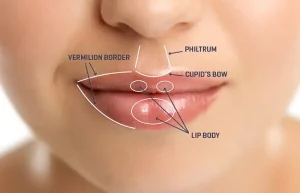Invisalign Mandibular Advancement with Occlusal Blocks

Invisalign Mandibular Advancement with Occlusal Blocks: Modern Overbite Solutions Backed by Research
Invisalign’s Mandibular Advancement (MA) with occlusal blocks offers a clear, comfortable alternative for correcting overbite—especially in growing patients with Class II malocclusions—by combining jaw and tooth alignment in one device. The latest research highlights efficiency, patient comfort, and vertical bite control, with some caveats around planning accuracy and the need for refinements.
What Is MA with Occlusal Blocks?
- MA with occlusal blocks uses clear aligners featuring “precision wings” that guide the lower jaw forward for bite correction, while solid occlusal blocks built into the trays help open the bite and keep aligners well-seated—even for challenging deep-bite cases.
- The blocks are made from reinforced SmartTrack material for stability and comfort, and the system enables simultaneous bite correction and teeth alignment, often reducing the need for multiple appliance phases.
Who Benefits Most?
- The approach is mainly for growing teens in late mixed or early permanent dentition, when jaw growth and skeletal changes are possible.
- Adults may benefit from tooth movement (“camouflage”), but should not expect significant skeletal changes.
How Does It Perform Versus Alternatives?
- Recent research shows MA and traditional elastics are both effective at reducing overjet and overbite and advancing the jaw position in growing patients, with MA offering notable comfort and esthetic advantages.
- Research notes bite blocks improve engagement and efficiency, making vertical opening and early advancement possible—even in severe deep-bite Class II patterns.
Predictability and Planning
- Studies found less than half of planned overjet reduction and about a third of planned molar correction are usually achieved with the initial MA phase; clinicians should plan for overcorrection and expect refinement sets.
- Digital treatment plans often overestimate vertical changes; occlusal blocks help, but auxiliary mechanics (elastics, attachments, minor IPR) are frequently needed for best results.
Patient Experience & Compliance
- Compared to bulky metal appliances (like Twin Block), the MA aligners are more comfortable, less visually noticeable, easier to insert, and lead to fewer emergency visits for breakage.
- Comfort and esthetics increase patient adherence, which is critical for successful correction.
What Can Patients Expect?
- Most growing patients see a meaningful reduction in overjet/overbite and improved jaw relationships, with a more pleasant treatment experience.
- Many cases require auxiliary mechanics and refinements to fully realize treatment goals; adults typically achieve dental—not major skeletal—change.
- Treatment timing varies, but be prepared for multiple phases due to the planning-achievement gap seen in studies.
Key Tips for Clinicians
- Build extra advancement (“overcorrection”) and plan for refinements.
- Use occlusal blocks strategically for vertical control, especially in deep bites.
- Patient growth phase significantly affects skeletal versus dental outcomes.
FAQs
- Adults: Clear aligners with MA can help camouflage Class II bites prosthetically, but skeletal correction is limited and might need surgery in severe cases.
- Speed of treatment: Varies with severity and age; typically spans several months with additional refinement likely.
- Results vs. Twin Block/Herbst: Similar dental corrections and patient-rated comfort; long-term skeletal data are still developing.
Invisalign MA with occlusal blocks is a modern, patient-friendly advancement for treating overbites, offering effective results while prioritizing comfort and efficiency—but requires thoughtful planning and possibly extra phases for best outcomes.






